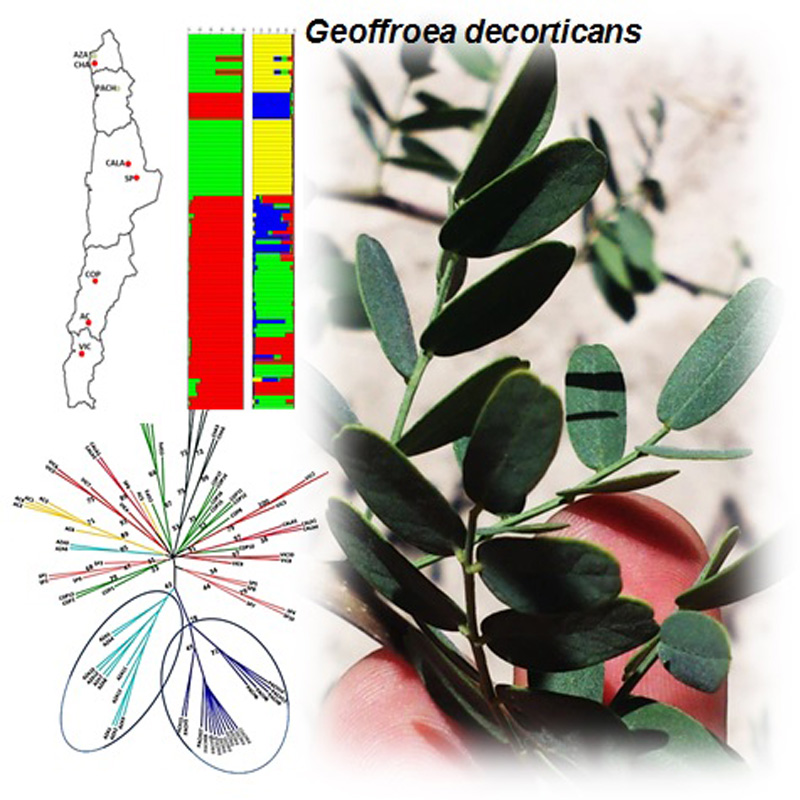Microsatellites reveal a high genetic differentiation among native Geoffroea decorticans populations in Chilean Atacama Desert
DOI:
https://doi.org/10.31055/1851.2372.v54.n2.24367Keywords:
gene flow, genetic structure, genetic variability, SSR markers.Abstract
Background and aims: The extreme conditions in the Chilean Atacama Desert are a major hurdle for the survival of any organism. Despite this, several legume populations of Geoffroea decorticans have thrived within this harsh, hostile environment for centuries. Here, we sought to determine the
genetic variability in G. decorticans populations, given its wide distribution across the Atacama Desert, the driest and most ancient desert on Earth. The specific aims of the present study were to determinate the level of genetic diversity and assess genetic structure in eight populations of G.
decorticans from Chilean Atacama Desert.
M&M: Eighty-four G. decorticans individuals were selected for sampling across eight localities in Northern Chile. Five microsatellites were used to analyze genetic diversity, differentiation among populations, population structure and gene flow.
Results: The majority of the analyzed populations from the Atacama Desert displayed a high genetic diversity, with the exception of PACH. G. decorticans (chañar) populations also displayed ahigh genetic differentiation and a moderate gene flow given by the natural barrier imposed by the Atacama Desert. The eight chañar populations studied were separated in groups from Northern and Southern regions.
Conclusions: Microsatellites have provided valuable baseline information to understand the genetic diversity and structure of G. decorticans populations at the Atacama Desert.
Downloads

Downloads
Published
How to Cite
Issue
Section
License
Provides immediate and free OPEN ACCESS to its content under the principle of making research freely available to the public, which fosters a greater exchange of global knowledge, allowing authors to maintain their copyright without restrictions.
Material published in Bol. Soc. Argent. Bot. is distributed under a Creative Commons Attribution-NonCommercial-ShareAlike 4.0 International license.








